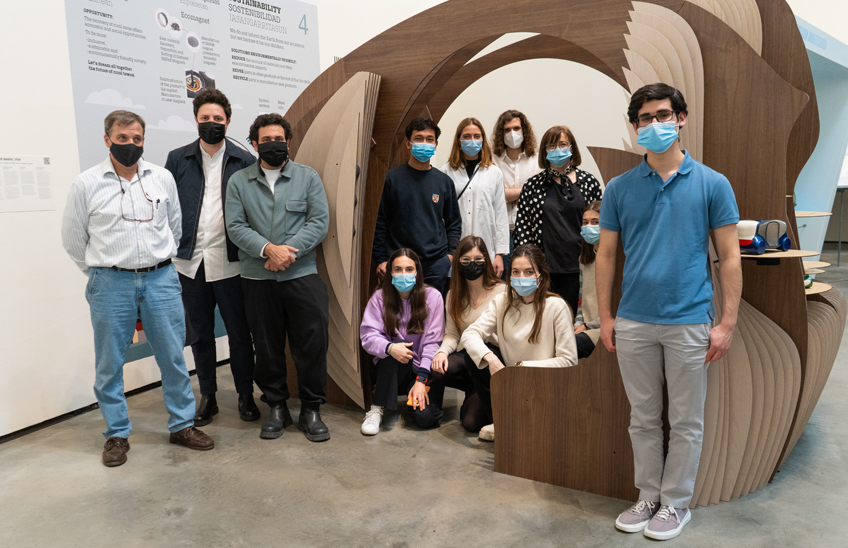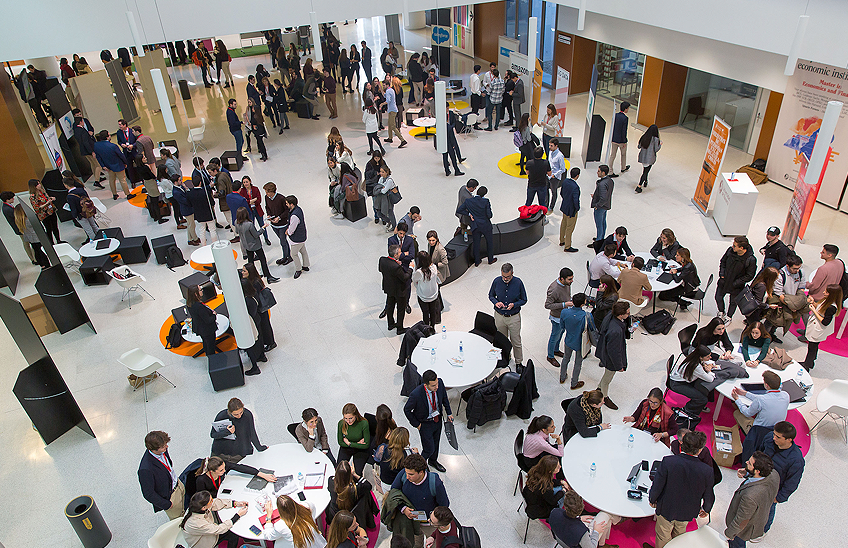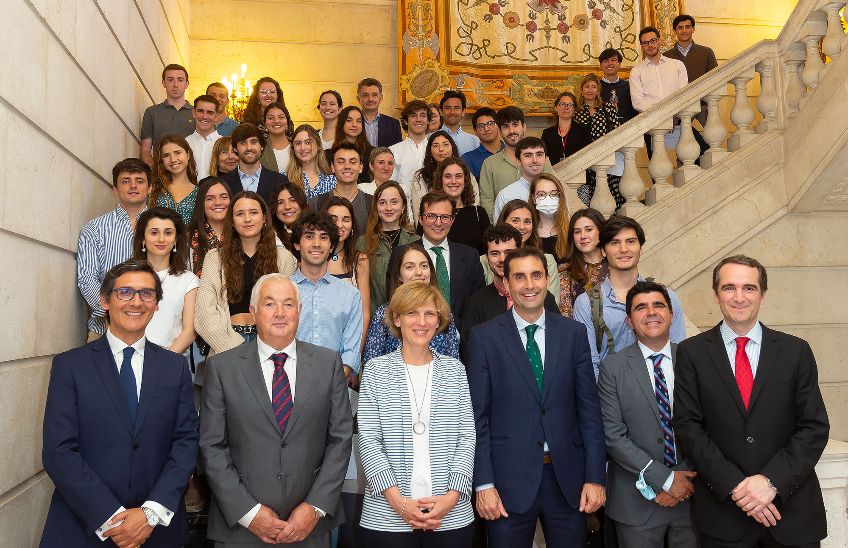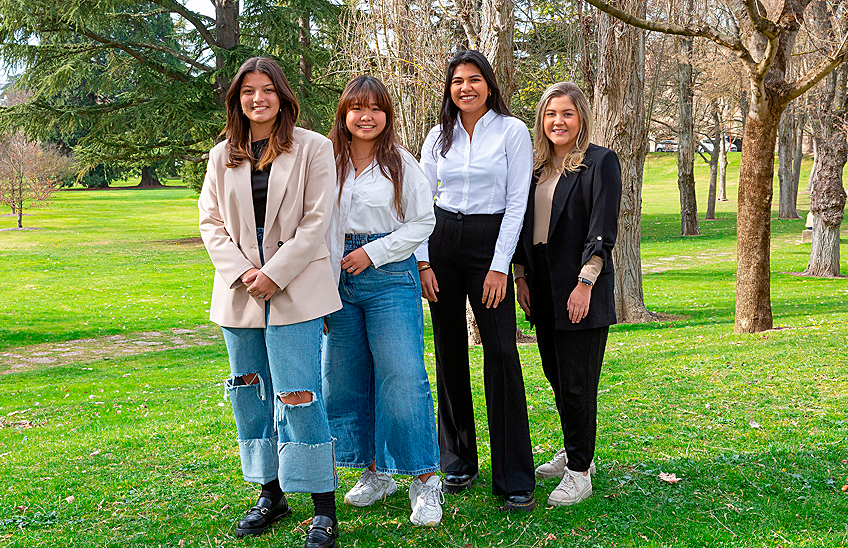An autonomous and sustainable car designed by the University, on display at the Guggenheim Museum Bilbao
It forms part of the samplecelebrating the artistic dimension of the automobile organised by the Museum, together with the Norman Foster Foundation.

PhotoMaríaCalvo/
12 | 04 | 2022
Students and professors from the Schools of Engineering (Tecnun) and Architecture of the University of Navarra participate with a proposalof mobilitysustainable in the exhibitionMotion, Cars, Art, Architectureorganised by the Guggenheim Museum Bilbao on the occasion of its 25th Anniversary together with the Norman Foster Foundation. This sampleis dedicated to the history of the automobile and its relationship with art and architecture.
The projectis exhibited at the exhibitiondedicated to the future of the mobility, together with proposals from other Spanish universities and 12 international universities, selected expressly by the Norman Foster Foundation for this exhibition.
Specifically, School of Architectureand Tecnun have been working on a shared, autonomous and sustainable ecosystem of mobilityfor the rural environment.
The projectstarts from the thesis that 80% of the population lives in the urban area, highlighting the depopulation of rural areas. "The population in these areas find it difficult to get around if they do not have a private vehicle. In addition, part of this 20% is made up of elderly people who are unable to drive", explains Paz Morer, professor and lecturer at Tecnun. "When we talk about the future, we think of the city, because the modern city has been built around infrastructures, giving priority to the car and less to pedestrians and the quality of urban space", adds Javier Antón, professor at School of Architectureand managerof exhibitions.
"We conducted interviews with the inhabitants of Orexa, Baliarrain and Aduna, three villages in the Basque Country, and we detected several common needs", says Alaya Galán, a graduate in Mechanical Engineeringand Industrial Engineering design. "The projecttries to provide a solution to a generally ageing population in isolated places. They have few opportunities for mobility, and need to invest a lot of time in travelling," she adds.
In the researchdeveloped, several infrastructures are proposed through the use of technologies such as Big Data or Machine Learning that facilitate the speech, the implementation of vehicles powered by clean energies that reduce emissions and the evolution of a shared service eliminating the culture of vehicle ownership. "It is a proposalthat focuses on the person, and is committed to sustainability, both materially and socially", adds Paz Morer.
A car shaped like an amoeba
Part of the project consisted of presenting this mobility proposal in an exhibition context, and designing the visitor experience in the museum itself. Specifically, a model of a full-scale vehicle in the shape of an amoeba has been created. The proposal can be seen in the exhibition and is composed of more than 100 pieces, measures 3.75 meters long, 3 meters wide and 2.50 meters high. Weighing about 1,400 kg, it is made of high-strength phenolic sheets. It is composed of ribs and gills that go from one end to the other. These ribs are joined together with wooden discs glued with high performance sica. An infographic has also been installed to summarize the 2.5 x meter research project .
Javier Antón points out that "our intervention in the conference roomis reinforced from the curatorial point of view with the experiential part that involves the visitor being able to sit in our amoeba of the future. The goalis for them to imagine what it would be like to travel in this transport subjectin the very distant future, while they get to know in detail the researcharranged in the infographic".
The projecthas counted with the support of partnershipof companies such as ParklexProdema, Ceit, Ecomagnet, Antolin, SQA drones and the University Museum of Navarra.

Photo: Courtesy
Interdisciplinary learning in a real project
Students from Degreesof Mechanical Engineering, from designIndustrial Engineering at Tecnun and from Degreesin Architecture and designat School of Architecture took part in this project. Both have applied the knowledge they have developed in the degree program. "During the degree programwe have seen the different methodologies that you have to carry out to carry out a phase of research. I thought it was a good opportunity to get involved in projectto apply this knowledge in a realproject", explains Alaya Galán, a graduate of the University.
For her part, Leyre Fernández, a student of designof the accredited specializationServices, says that "I have learned a lot from the world of art, such as the managementof the museum, the agents that intervene in the exhibition, all the staffthat is involved and how to work to intervene in the most discreet way possible and the managementof workas a team". Her colleague from Degreein Architecture Leire Gómezstresses that "it has been a good opportunity because we have learnt that the interdisciplinary union between two careers generates better results".
See the website with the details of project.




